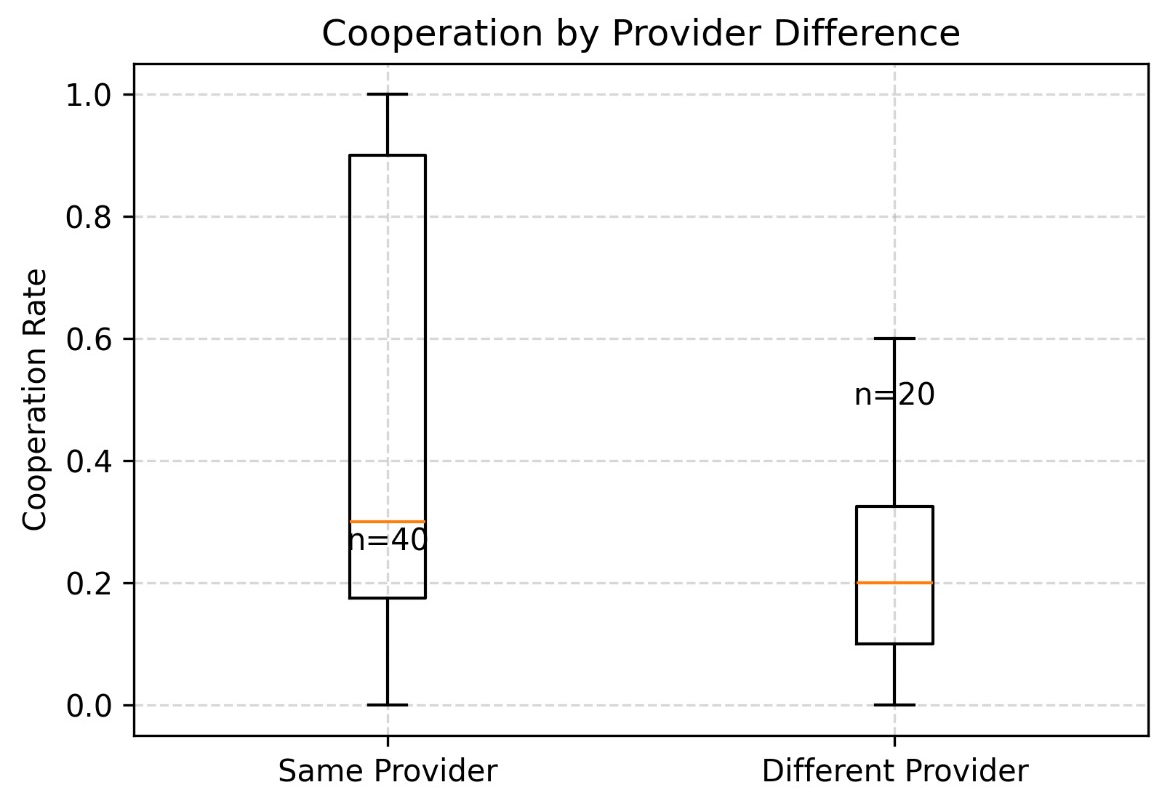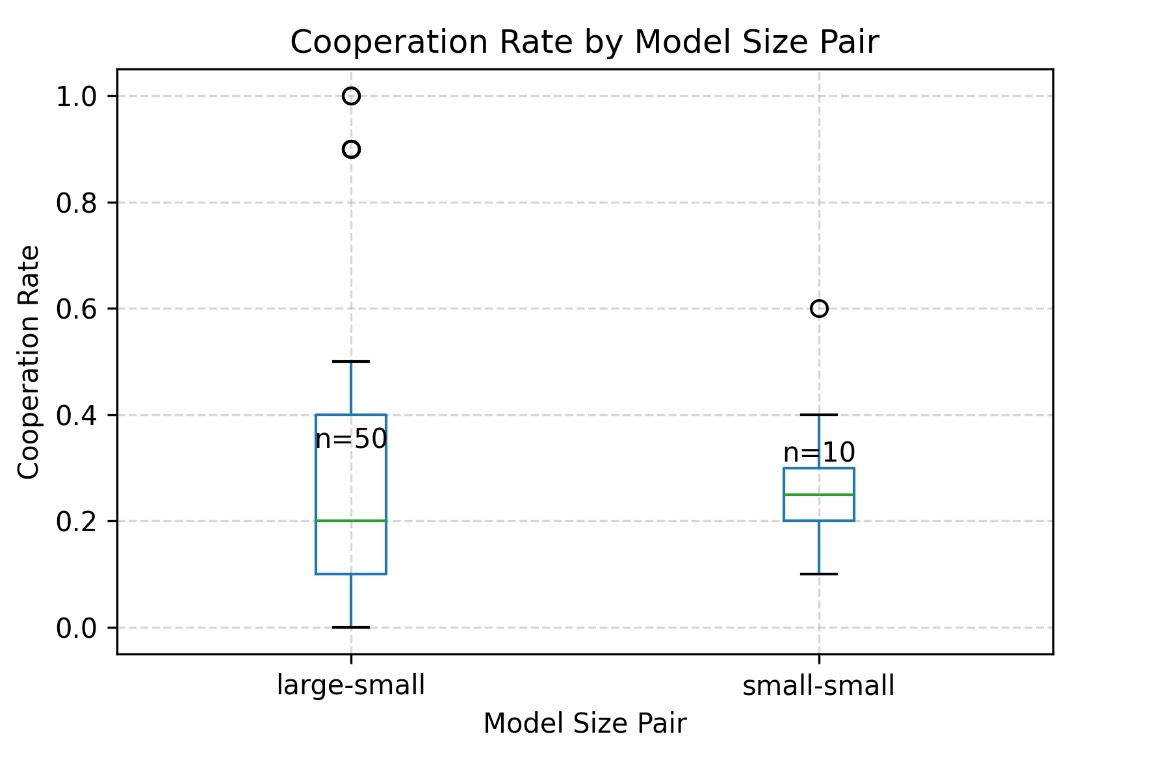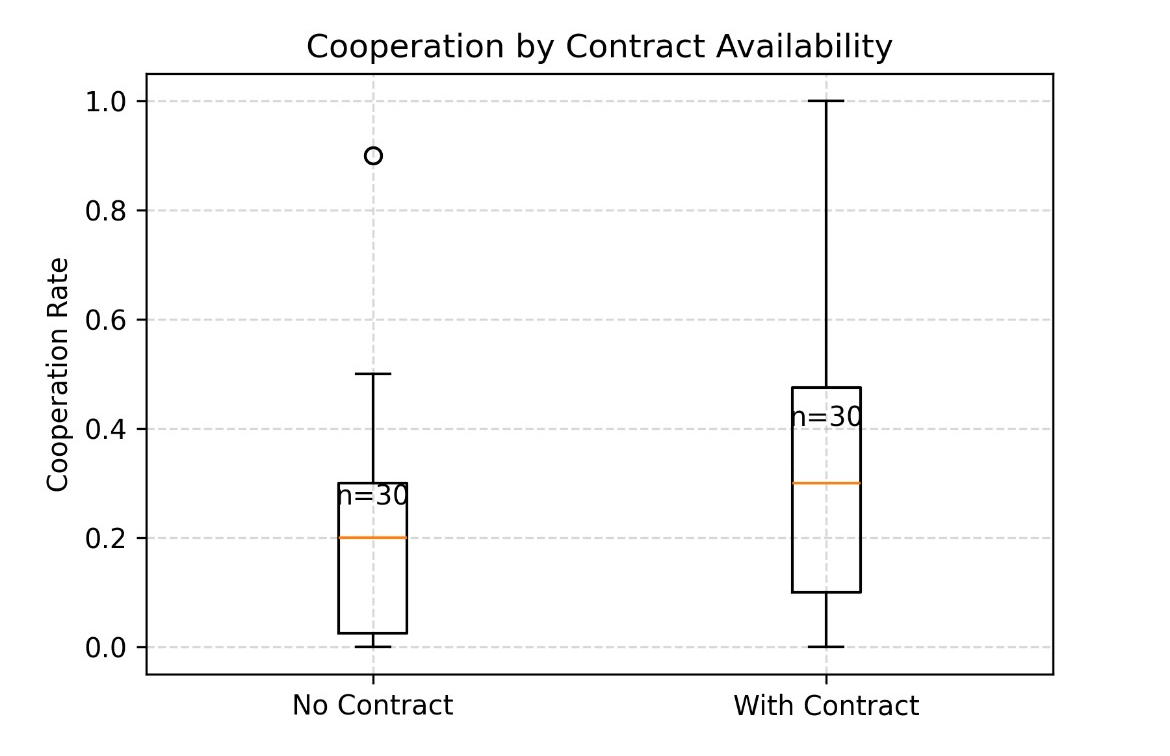Negotiation Strategies
Studying how effectively AI models can negotiate in a multi-turn prisoners dilemma
Collaborative Agents: Looking into how Agents Cooperate in a Multi-Turn Prisoner’s Dilemma
I looked at six pairings of agents—across OpenAI, Anthropic & Gemini models—and measured how model provider and size affects collaboration, and I explored giving models the option to make, and break contracts between each other, to see how this affects cooperative behavior. Here’s what I found.
1. Experimental Setup
Agent Strategies
- Each pairing was tested in two conditions: with and without the ability to form and break contracts.* Contract decisions were explicitly logged as structured “yes” or “no” decisions made by the agents.
Models Used
| Model | Provider | Size |
|---|---|---|
| GPT-4o | OpenAI | Large |
| GPT-4o-mini | OpenAI | Small |
| Claude 3.5 Sonnet V2 | Anthropic | Small |
| Gemini 1.5 Pro | Gemini | Large |
| Gemini 1.5 Flash | Gemini | Small |
Pairings Tested
- GPT-4 vs Claude 3.5-v2
- GPT-4 vs GPT-4-mini
- Claude 3.5-v2 vs GPT-4-mini
- Gemini 1.5-pro vs Gemini 1.5-flash
- Gemini 1.5-pro vs GPT-4-mini
- Gemini 1.5-pro vs Claude 3.5-v2
Each pairing was evaluated in repeated interactions to ensure statistical robustness.
2. Cooperation Results
Provider Differences
- Cooperation was significantly higher between models from the same provider compared to models from different providers.
- Same-provider average cooperation: approximately 45%* Different-provider average cooperation: approximately 21%

Model Size Effects
- Pairings between one large and one small model showed considerably higher cooperation rates compared to pairings of two large models.
- Large-small pair average cooperation: about 65%* Large-large pair average cooperation: about 22%

Effect of Contracts
- Allowing contracts led to a significant improvement in cooperation across all pairings.
- With contracts: average cooperation rose to around 36%* Without contracts: average cooperation was lower, around 22%

3. Contract-Breaking Behavior
Power Dynamics (Model Size)
- Smaller models consistently broke contracts more frequently when interacting with larger models.
- Small model breaking contracts with large: about 87% of the time
- Large model breaking contracts with small: about 22% of the time
Insert plot: “Contract Break Rate by Size Direction” bar chart here
Provider Trust Dynamics
- Surprisingly, contract breaking was more frequent between models from the same provider than those from different providers.
- Same-provider break rate: approximately 60%
- Different-provider break rate: approximately 45% Insert plot: “Contract Break Rate by Provider Relationship” bar chart here
4. Discussion
- Same-provider cooperation is significantly higher, possibly due to underlying similarities in model training and behavioral tendencies
- Mixed-size pairings appear to balance incentives, possibly due to differing strategic perspectives or a perceived hierarchy.
- Contracts serve as effective commitment mechanisms, enhancing overall cooperation.
- The tendency of smaller models to frequently break contracts with larger models suggests an exploitation of asymmetric expectations.
- Increased contract breaking between same-provider models may be due to heightened competitive or strategic dynamics within a shared ecosystem.
Implications and Recommendations
- Deploying mixed-size agent teams with explicit contracts might yield optimal cooperation.
- Careful consideration of provider ecosystems is crucial; diversity in provider selection could reduce competitive dynamics.
Further work should explore varied contract penalties and more complex multi-agent settings to deepen understanding.
5. Conclusion
- Cooperation significantly improves with provider alignment, mixed-size pairings, and contract availability.
- Contract making and breaking is nuanced, heavily influenced by model size and provider alignment. This study reveals essential insights into designing cooperative multi-agent systems with AI models.
6. Appendix
- Code: https://github.com/AEJaspan/negotiation_blog